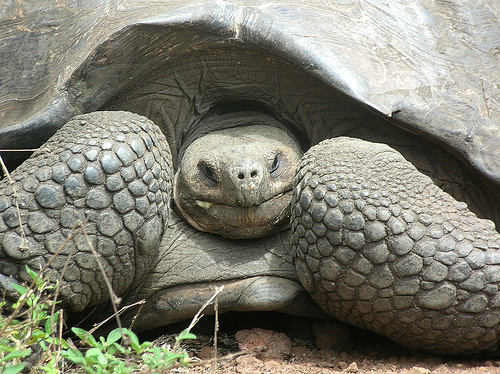Before reading further in this post, ask yourself a question (and answer honestly): Which do you care about more, guiltless (if hungry) goats or the Galápagos Islands’ giant tortoises?
If you answered goats, this post will make you sad.
Here was the situation on the Galápagos Islands of Española: a population of hundreds of thousands of tortoises had dwindled to a few thousand. As the tortoises’ population decreased, the population of goats, introduced to the islands by humans, grew to tens of thousands. The goats were eating all of the islands’ vegetation. It was not a good situation for the tortoises.
And so conservationists decided the goats had to go. They tried shooting them individually. They tried shooting them from helicopters and tracking them using radio devices and dogs. The goats endured. Finally, the anti-goat forces lit upon a diabolical scheme to get rid of the goats: they’d turn a select few of them into Judas goats. Solutions journal reports on how this scheme worked:
Certain goats were fitted with electronic collars, allowing hunters to find them—and the herd—easily. Hunters killed the herd but left the one goat with the electronic collar. They waited for the marked goat to locate another herd, and then they repeated the process until only the goat with the collar was left. Then it was shot.
The good news is that scientists were able to breed Española tortoises in captivity while this goat massacre was going on. The turtles were returned to the island and are doing well. The lesson here? Don’t introduce rapidly breeding species to scientifically important habitats! Jeez. Also don’t be a goat, they get a raw deal.


